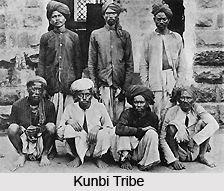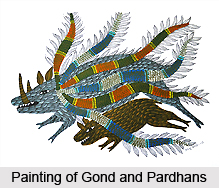 Tribes of Yavatmal district are varied in type and number. Most of these tribes are involved in agricultural activities and constitute lie scattered all over the district. Most of these tribal groups have a language and culture of their own, though they are equally capable of communicating outside their specific groups. Some of the major tribal groups found in the district of Yavatmal are discussed below.
Tribes of Yavatmal district are varied in type and number. Most of these tribes are involved in agricultural activities and constitute lie scattered all over the district. Most of these tribal groups have a language and culture of their own, though they are equally capable of communicating outside their specific groups. Some of the major tribal groups found in the district of Yavatmal are discussed below.
Kunbi tribe
The great cultivating castes of the Kunbis constitute 22 per cent of the population, though they are not as numerous in Yavatmal as in other districts of Berar. The Kunbi tribe makes up about a quarter of the population and they are representative of the agriculture class to which the bulk of patels and cultivators belong.
Andh
The Andhs are stated in the Census Reports as an aboriginal tribe. Nothing can be ascertained as to their origin, and they are not found in any Province. They have now adopted nearly all the practices of the Kunbis and are hardly distinguishable from them in dress or personal appearance. Like them, the Andh are also involved in cultivation. They employ a Brahmin as their priest, and profess to be Vaishnavas by religion, wearing the distinguishable marks of the sect on their foreheads.
Gond and Pardhans
Like the Andhs, the Gond tribe and Pardhans have adopted Hindu dress and customs to a larger extent. The Pardhans are the bards and musicians of the Gonds. Together they constitute about 10 per cent of the population. The Gonds have three subdivisions-Raj-Gonds, Dadves, Mokasis. The name of the last may possibly be derived from the fact that they held a privileged tenure under the Chanda kings and they rank even higher than the Raj-Gonds, who will take the food at their hands. The Dadves take food from either of the other two. Besides these sub castes, which are endogamous, the Gonds are also divided into sections that worship a number of different gods. No two persons who have the same number of Gods are allowed to marry each other. The people of the tribe speak Gondi among themselves and are also conversant in communicating in the Marathi language. They are mostly tenants and labourers and a few are patels of villages.
Kolam
The Kolams are a Dravidian tribe akin to the Gonds but distinct from them. They reside principally in the Wun taluka. They have a language of their own. In some respects they retain very primitive customs, but in dress they can hardly be distinguished from Kunbis.
Banjara
The Banjaras are 6 per cent of the population, residing principally in the forest tracts to the south of the district. They are also known as Labhana as a result of their former occupation of carrying salt. The Mathuria sub-caste are the highest and wear the sacred thread. They generally live a reputable life. The women wear two little sticks fixed in their hair, over which their cloth is drawn. The front portion of the hair hangs down beside the face and the hair at the back is woven into a plait with a silk thread. They have large ornaments of silver tied over the head and hanging down beside the ears. To these are attached little bells. Their arms are covered with bangles of ivory, and they have tinkling anklets on the feet. The women wear skirts and short cloths drawn over the shoulders and along their skirts double lines of cowries are embroidered.
Mali
The Malis or Marals are four per cent of the population and are chiefly occupied in growing vegetables and garden crops. They have several local subdivisions such as the Kosaria, Phulmali, Bhange, Bawne, Jire, Harde, Ghase, and Pahad.
Thus discussed are the various tribes found existing in the district of Yavatmal in Maharashtra.



















